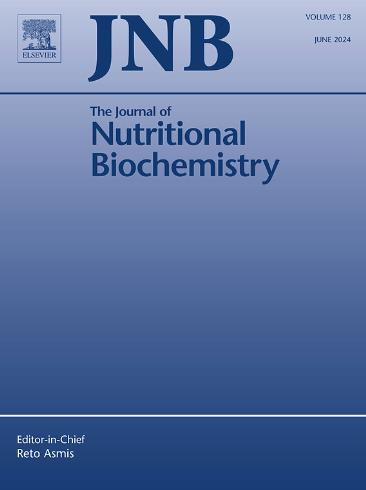AMPK-mediated energy metabolism disorders are associated with impaired type IIB muscle fiber regeneration in broiler chickens with wooden breast myopathy
IF 4.8
2区 医学
Q1 BIOCHEMISTRY & MOLECULAR BIOLOGY
引用次数: 0
Abstract
Wooden breast (WB) myopathy is a myodegenerative muscle disease, in which muscle regeneration is also commonly observed, and has been increasingly reported in fast-growing broilers in recent years. This study aims to investigate the underlying mechanism of energy metabolism abnormalities on muscle regeneration in WB. A total of 300 male Ross 308 broilers were evaluated at 42 days of age based on physical and biochemical examinations to classify the severity of WB. From these, 16 broilers were selected for each of three groups: the normal group (CON), the moderate WB group (WB-M), and the severe WB group (WB-S). Compared to CON, WB were heavier, thicker, harder and had lower meat quality. Additionally, WB exhibited disturbance of energy metabolism, with increased cholesterol and triglycerides and decreased glycogen and lactate contents. Meanwhile, WB exhibited muscle regeneration as illustrated by the increased central nuclei and inflammation cells in muscle and higher creatine kinase activity in serum and muscle. WB exhibited inhibition of AMPK activity, with lower phosphorylation at Thr172 and higher phosphorylation at Ser496. Consistently, WB dysregulated the downstream pathways of AMPK, such as protein synthesis activity, glycolysis activity, lipid metabolism activity, and inflammatory response. Furthermore, in primary myoblasts, AMPK activation suppressed type II B myofiber hypertrophy, while its inhibition enhanced hypertrophy. In conclusion, this study provides evidence that abnormal ⅡB myofiber regeneration associated with imbalance in AMPK-mediated energy homeostasis, plays a crucial role in the pathogenesis of WB. These finding may provide new insights into mitigating the onset of WB.

ampk介导的能量代谢紊乱与木性胸肌病肉鸡IIB型肌纤维再生受损相关
木乳(WB)肌病是一种肌肉退行性疾病,其中肌肉再生也很常见,近年来在快速生长的肉鸡中越来越多地报道。本研究旨在探讨肌肉再生中能量代谢异常的潜在机制。选取300只42日龄雄性罗斯308肉鸡,通过体格和生化检查对白化病的严重程度进行分级。选取16只肉仔鸡,分为正常组(CON)、中度WB组(WB- m)和重度WB组(WB- s)。与对照组相比,白猪较重、较厚、较硬,肉质较差。此外,白蛋白表现出能量代谢紊乱,胆固醇和甘油三酯升高,糖原和乳酸含量降低。与此同时,WB表现出肌肉再生的特征,表现为肌肉中心核和炎症细胞的增加,血清和肌肉中肌酸激酶活性的提高。WB抑制AMPK活性,Thr172位点磷酸化较低,Ser496位点磷酸化较高。WB一贯地失调AMPK的下游通路,如蛋白质合成活性、糖酵解活性、脂质代谢活性和炎症反应。此外,在原代成肌细胞中,AMPK的激活抑制了II型B肌纤维的肥大,而其抑制则增强了肥大。综上所述,本研究证明ⅡB肌纤维再生异常与ampk介导的能量稳态失衡有关,在WB发病中起着至关重要的作用。这些发现可能为减轻WB发病提供新的见解。
本文章由计算机程序翻译,如有差异,请以英文原文为准。
求助全文
约1分钟内获得全文
求助全文
来源期刊

Journal of Nutritional Biochemistry
医学-生化与分子生物学
CiteScore
9.50
自引率
3.60%
发文量
237
审稿时长
68 days
期刊介绍:
Devoted to advancements in nutritional sciences, The Journal of Nutritional Biochemistry presents experimental nutrition research as it relates to: biochemistry, molecular biology, toxicology, or physiology.
Rigorous reviews by an international editorial board of distinguished scientists ensure publication of the most current and key research being conducted in nutrition at the cellular, animal and human level. In addition to its monthly features of critical reviews and research articles, The Journal of Nutritional Biochemistry also periodically publishes emerging issues, experimental methods, and other types of articles.
 求助内容:
求助内容: 应助结果提醒方式:
应助结果提醒方式:


